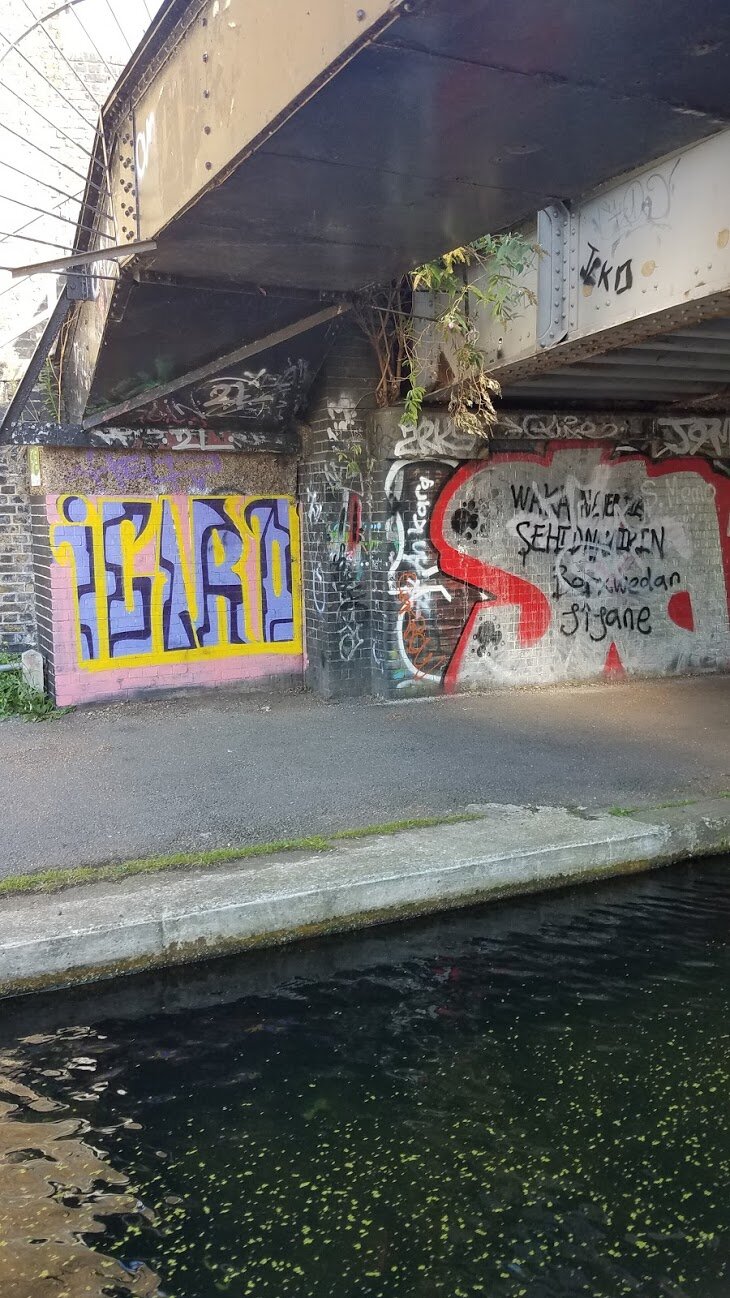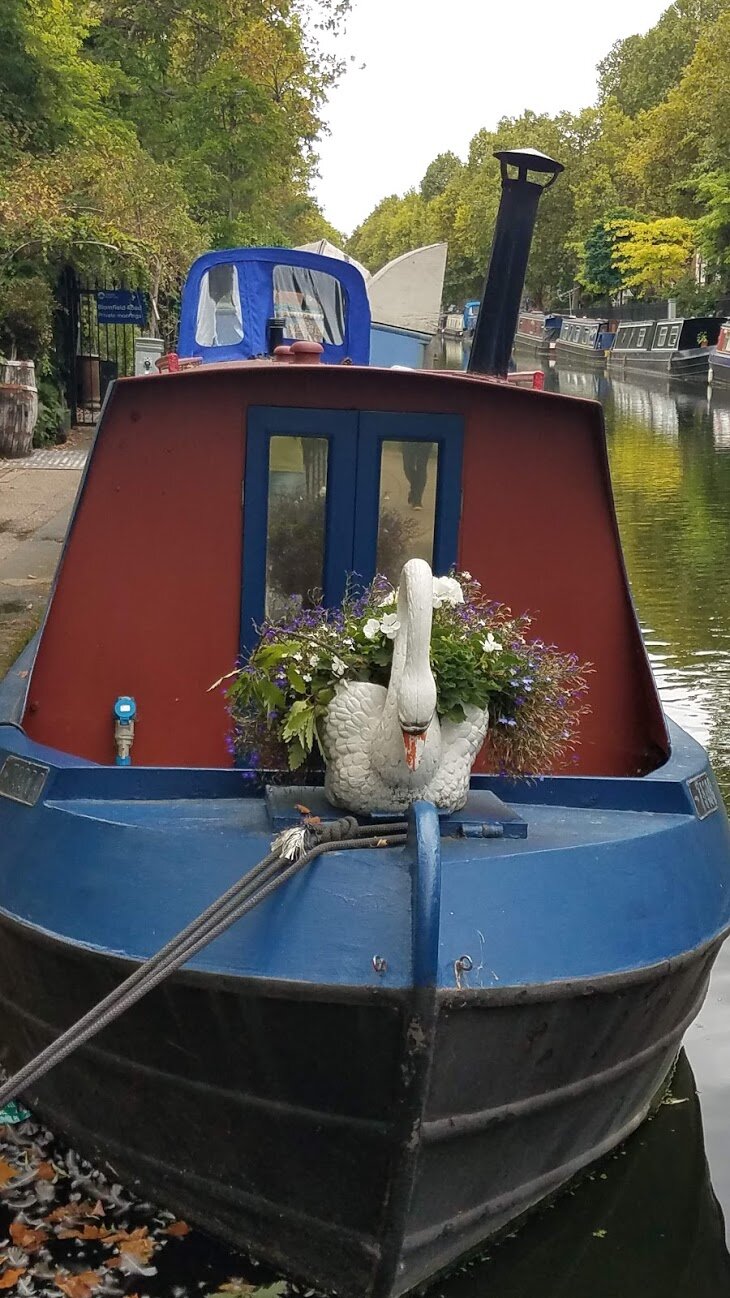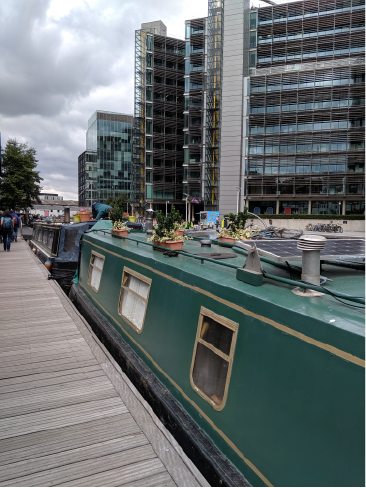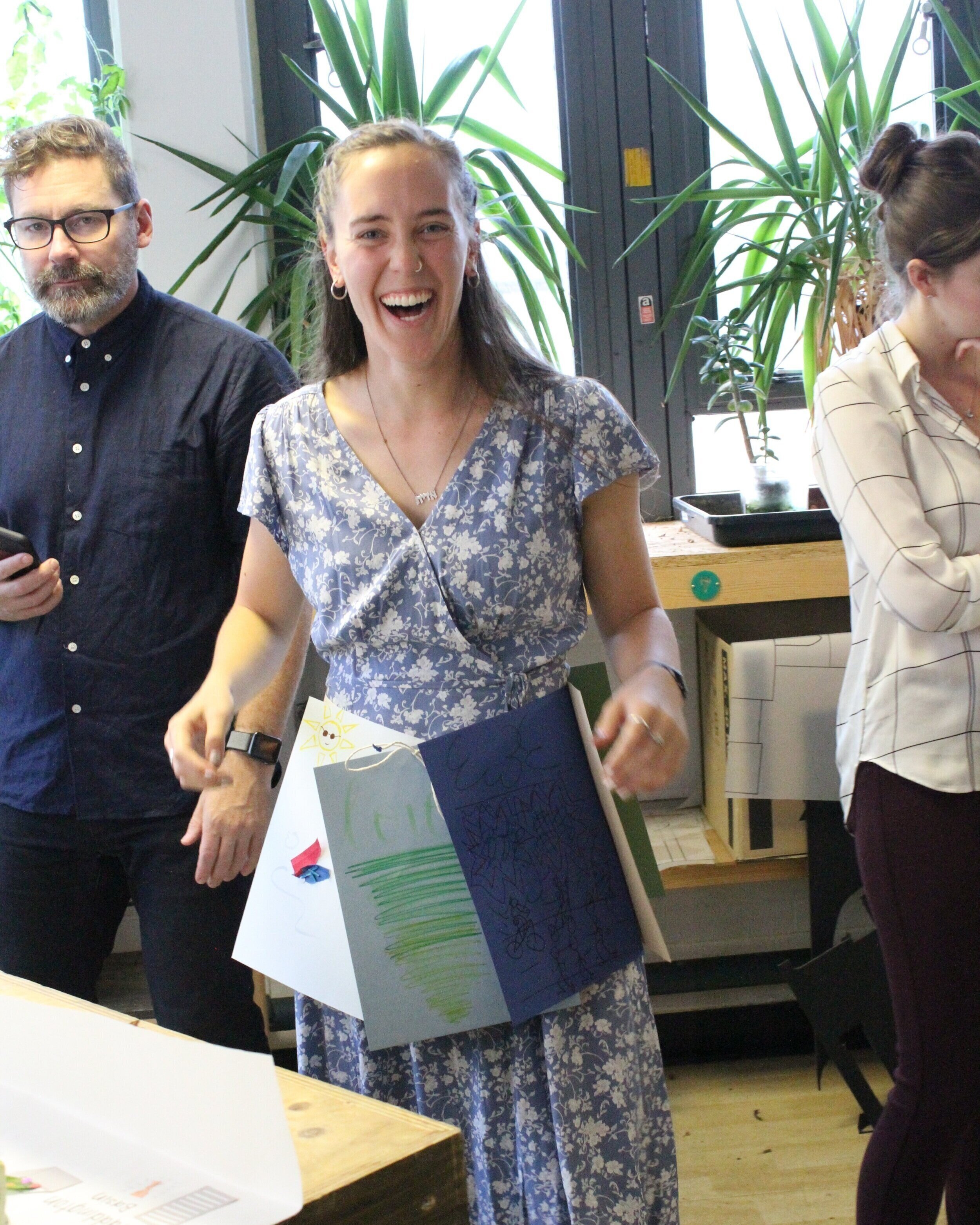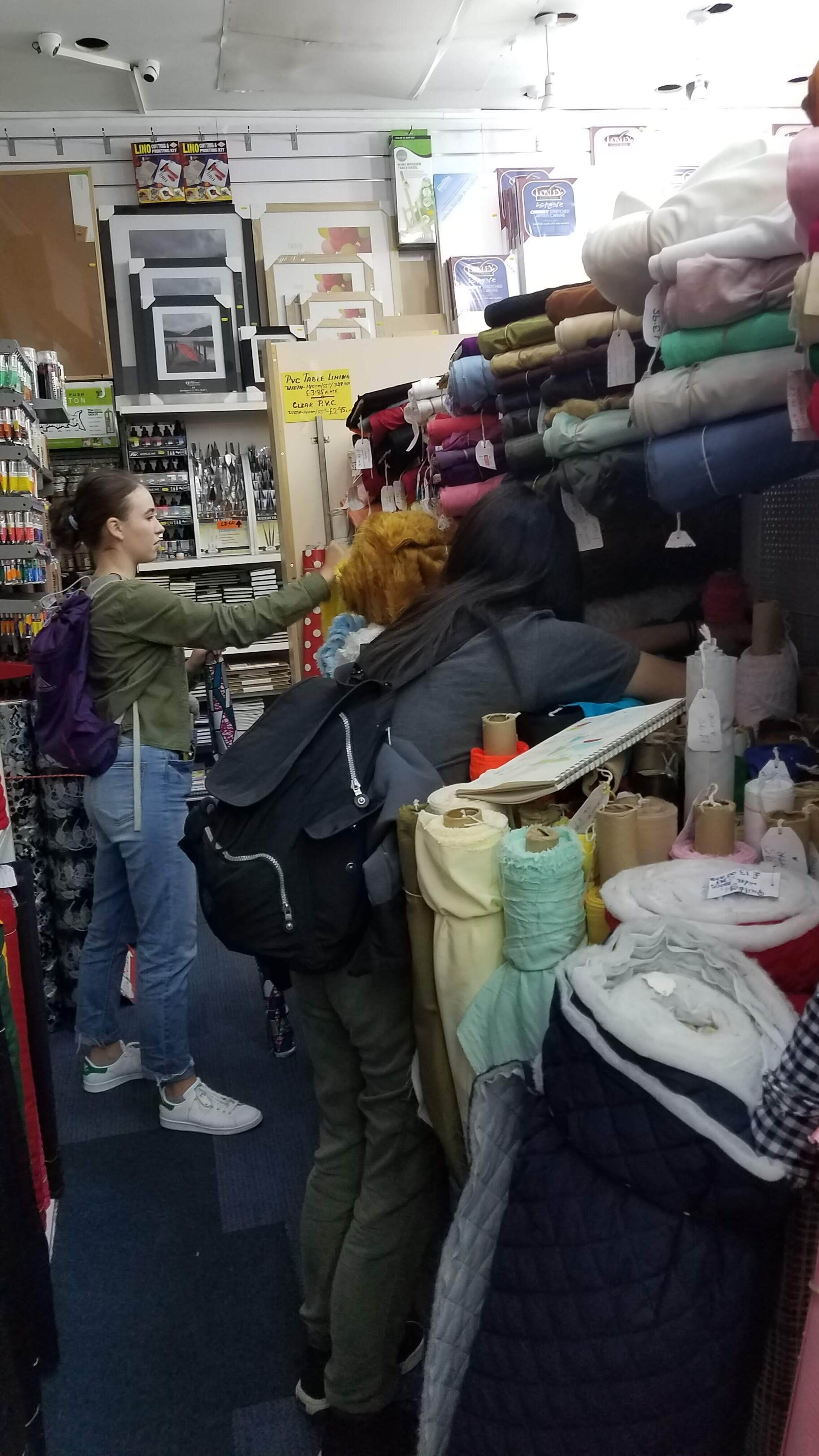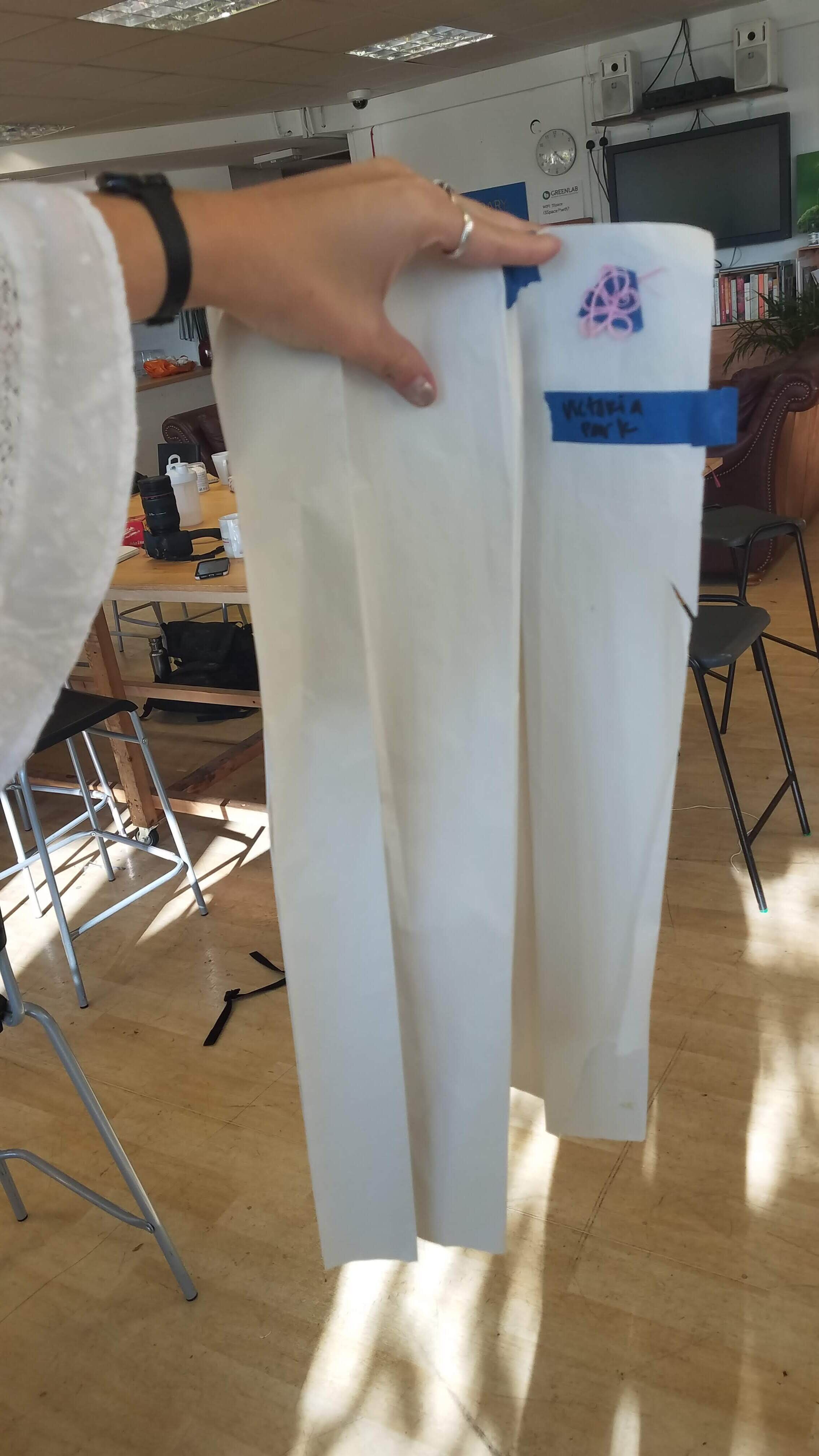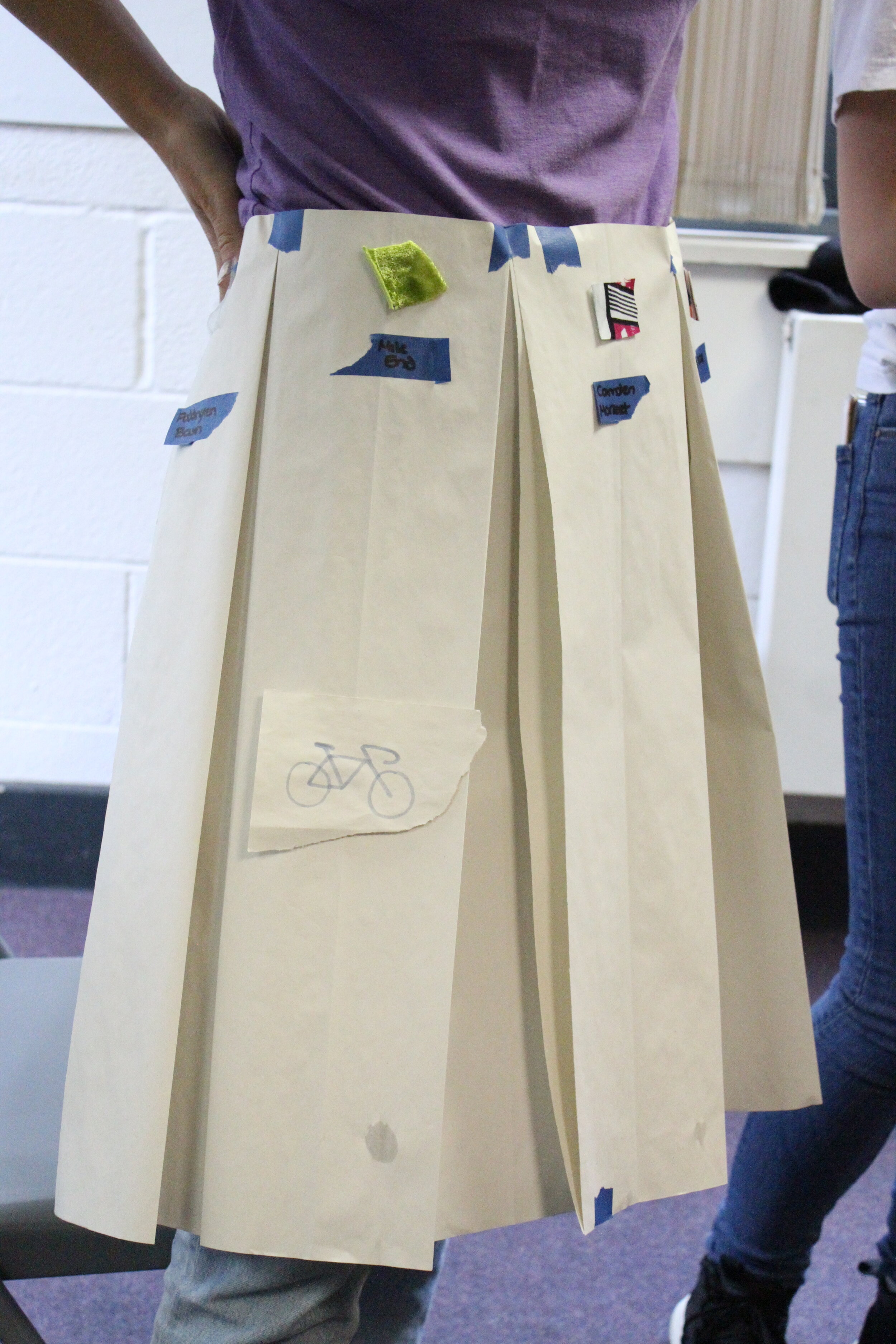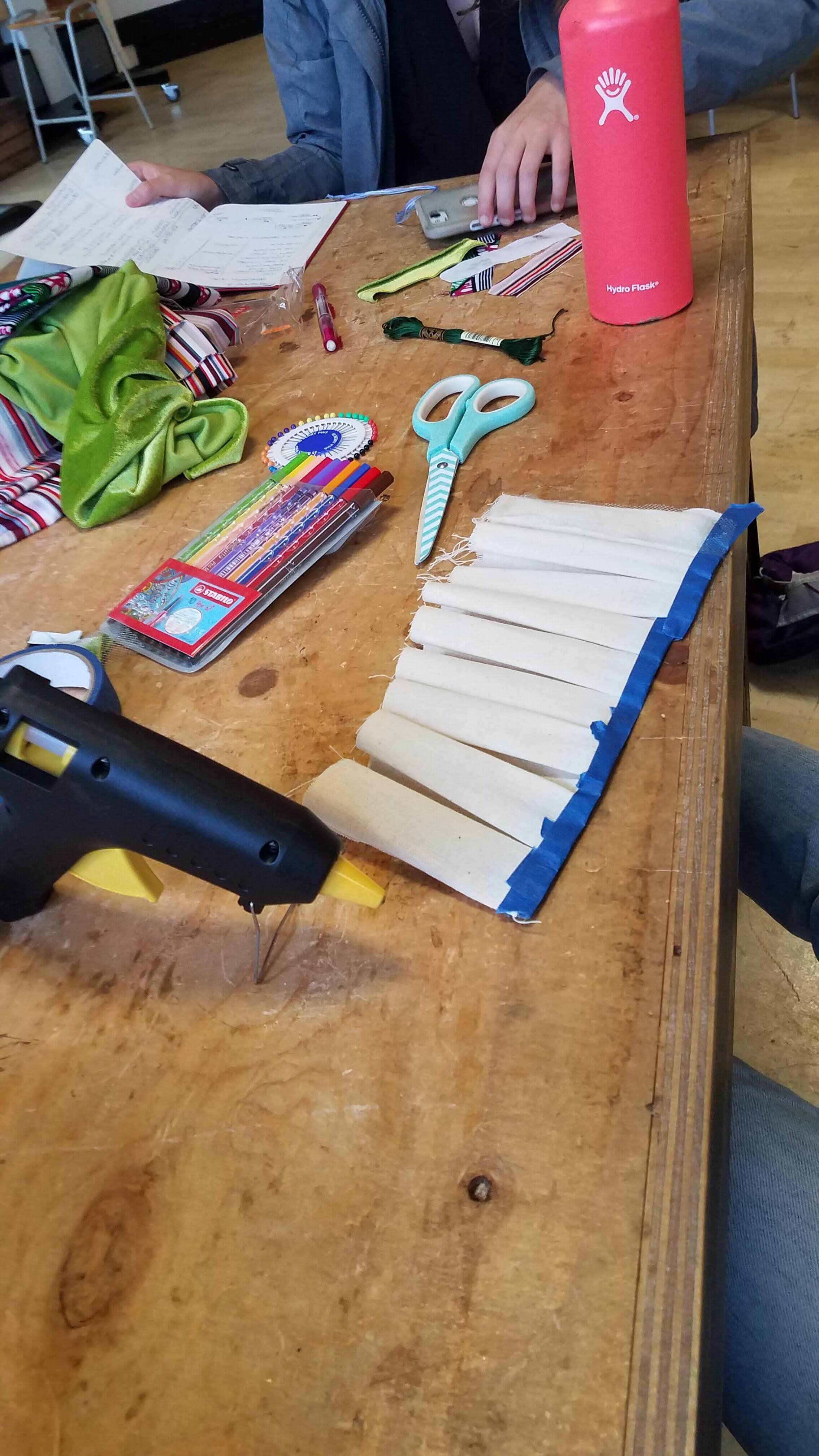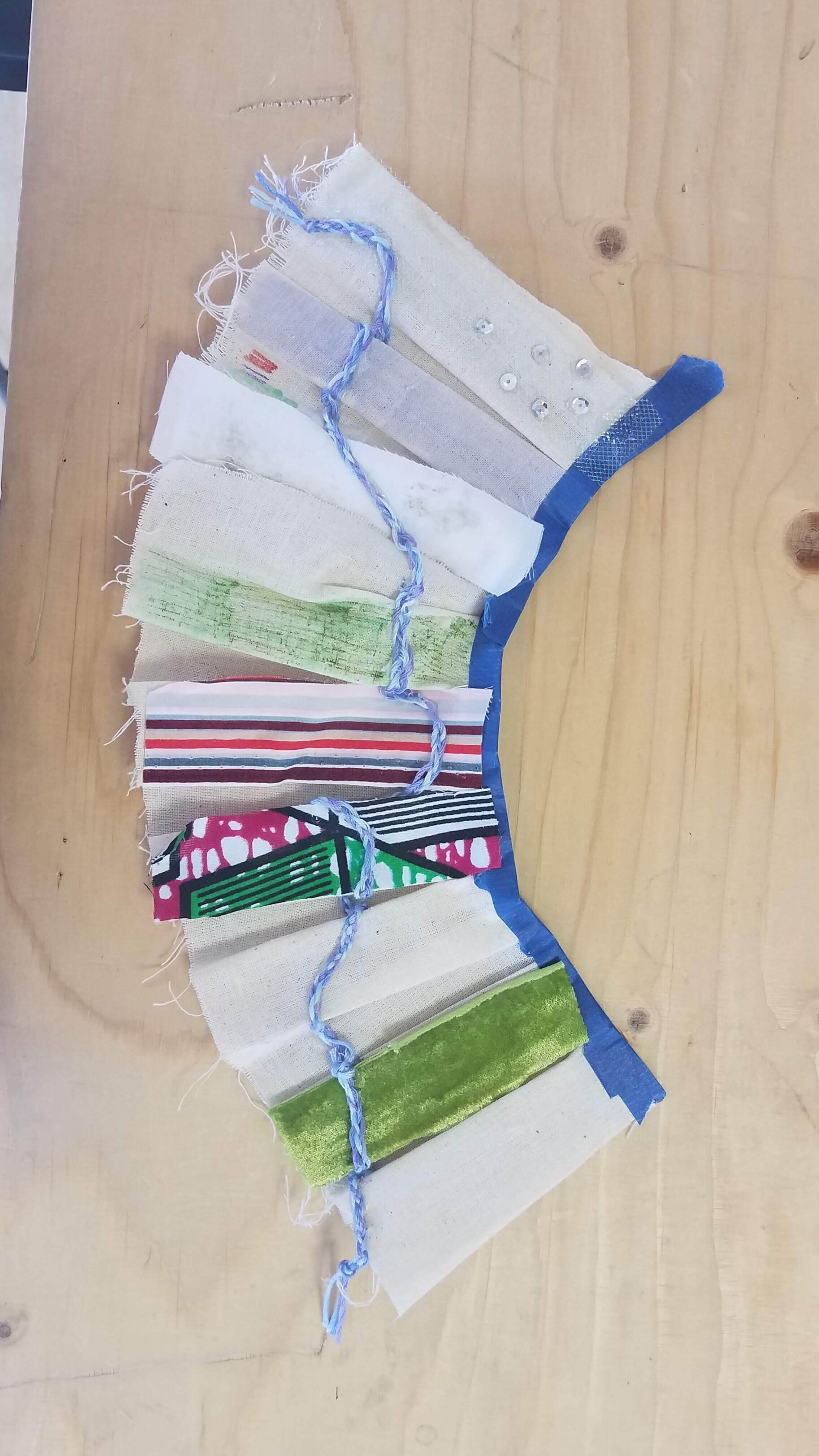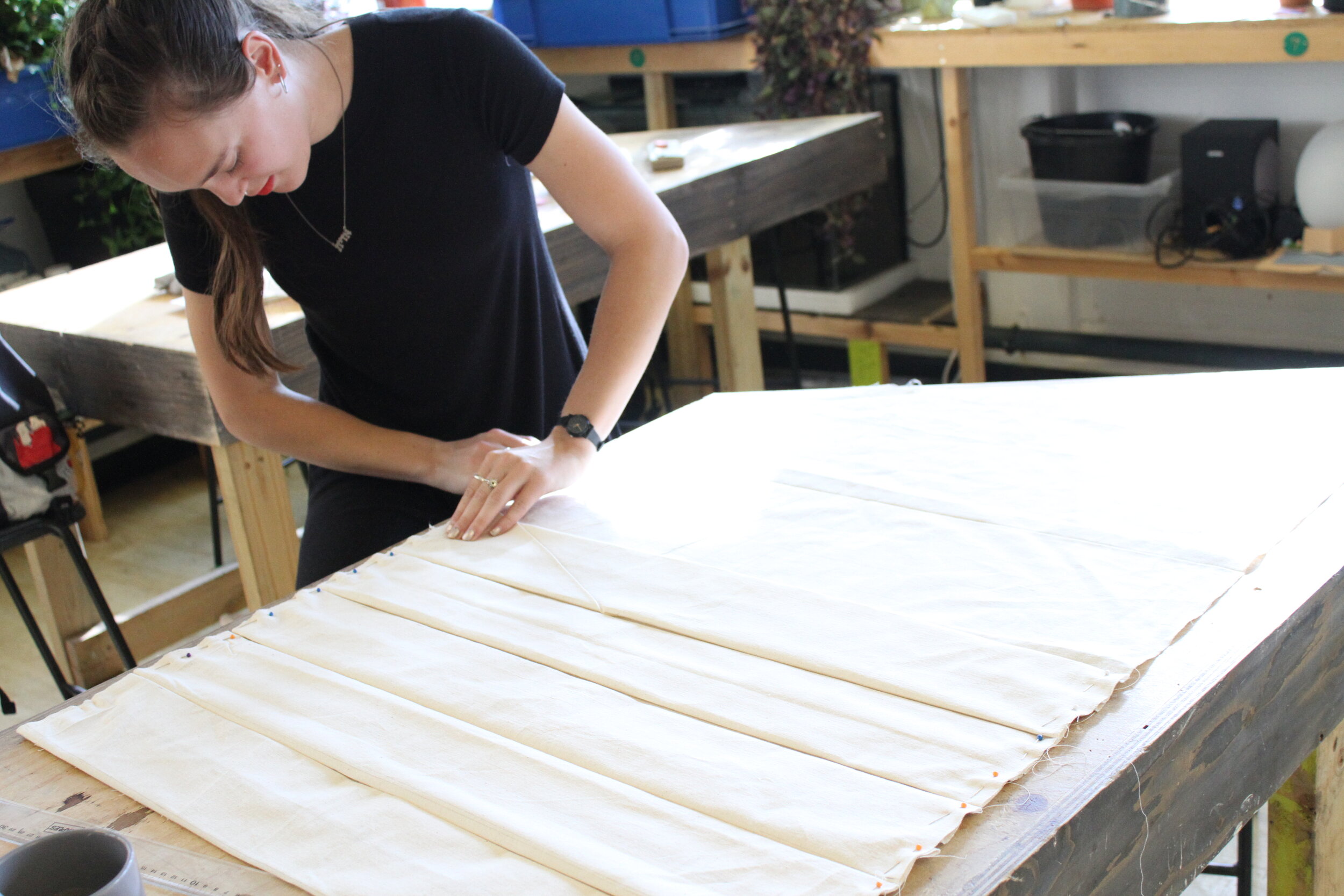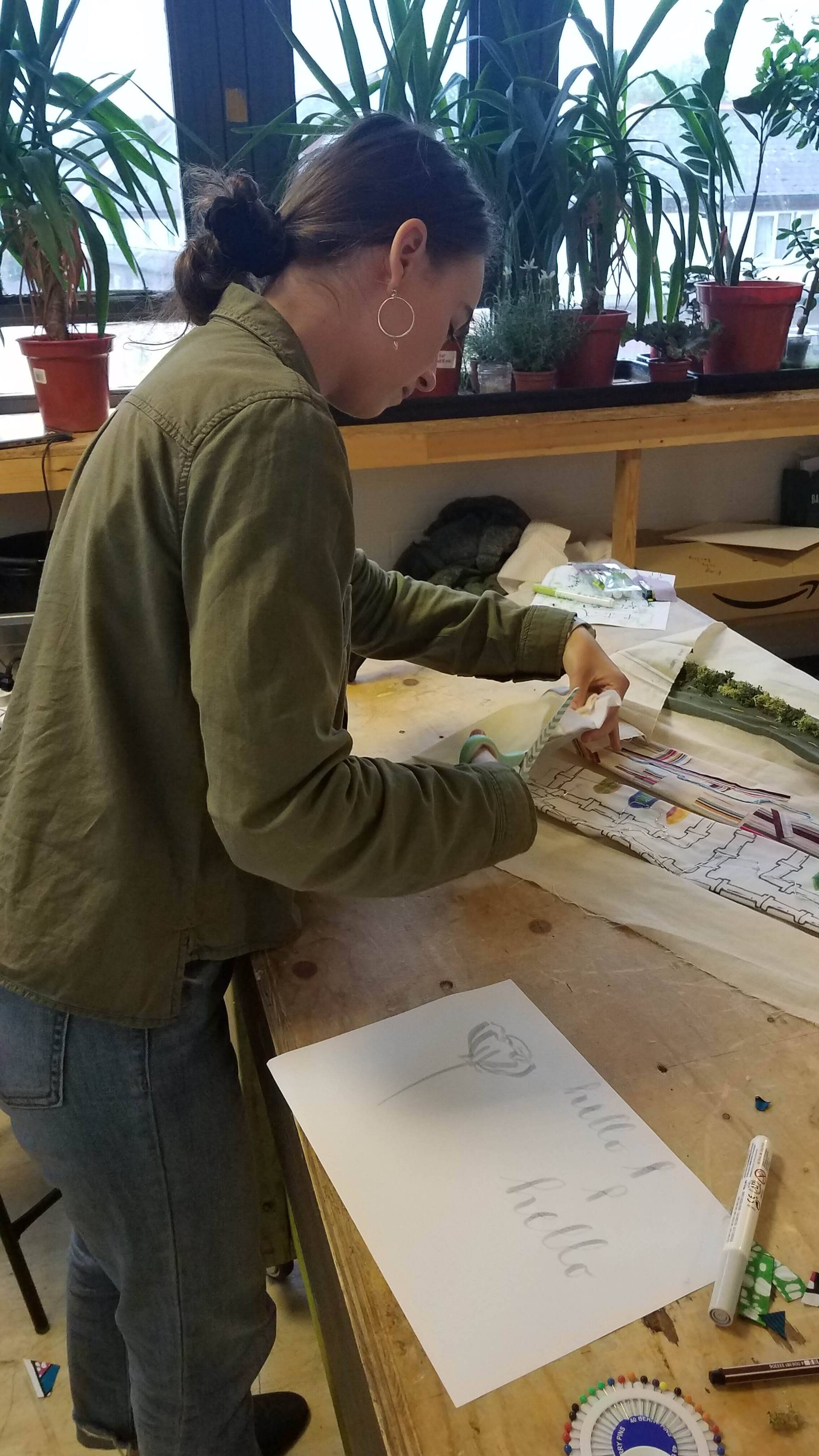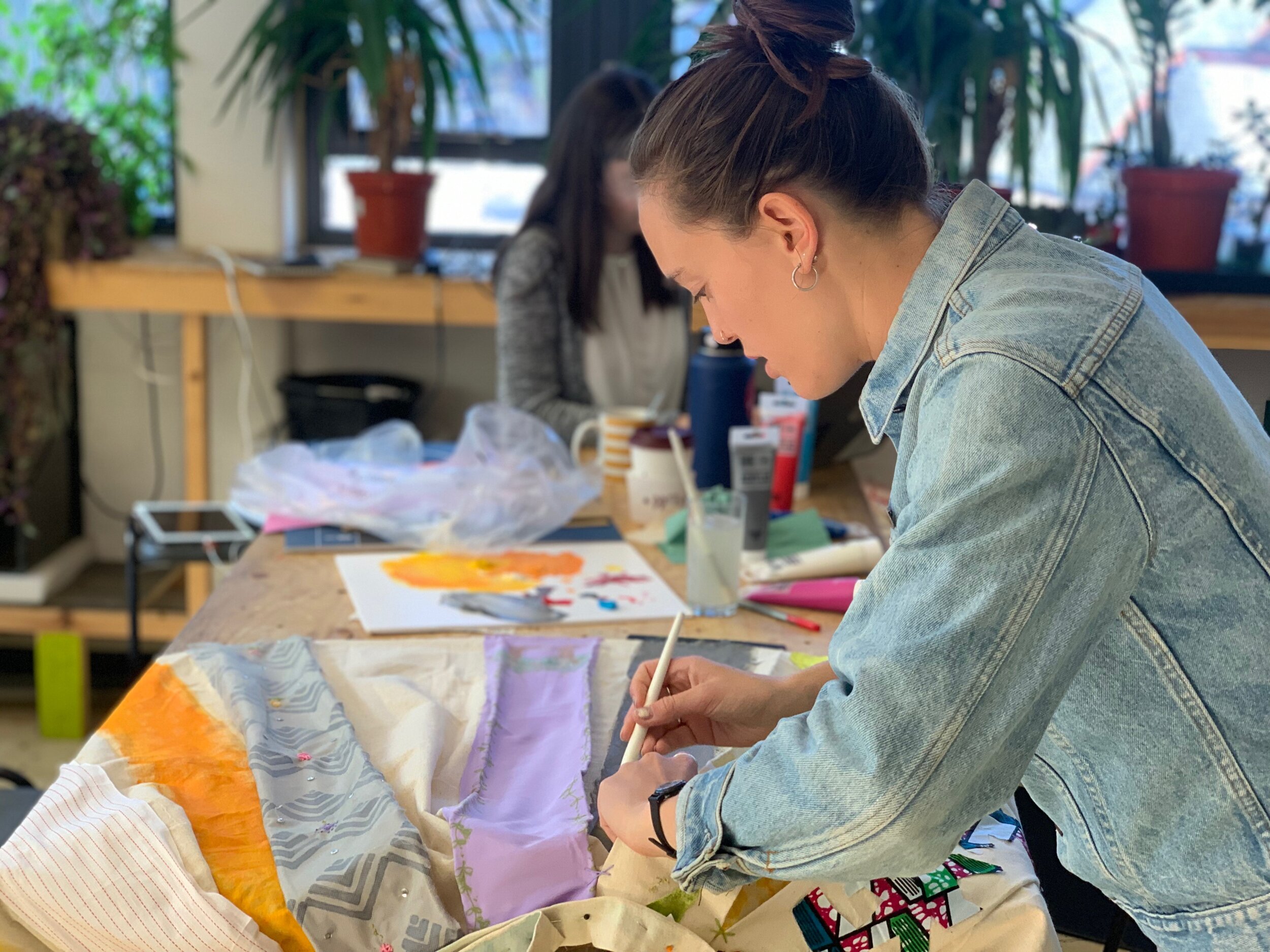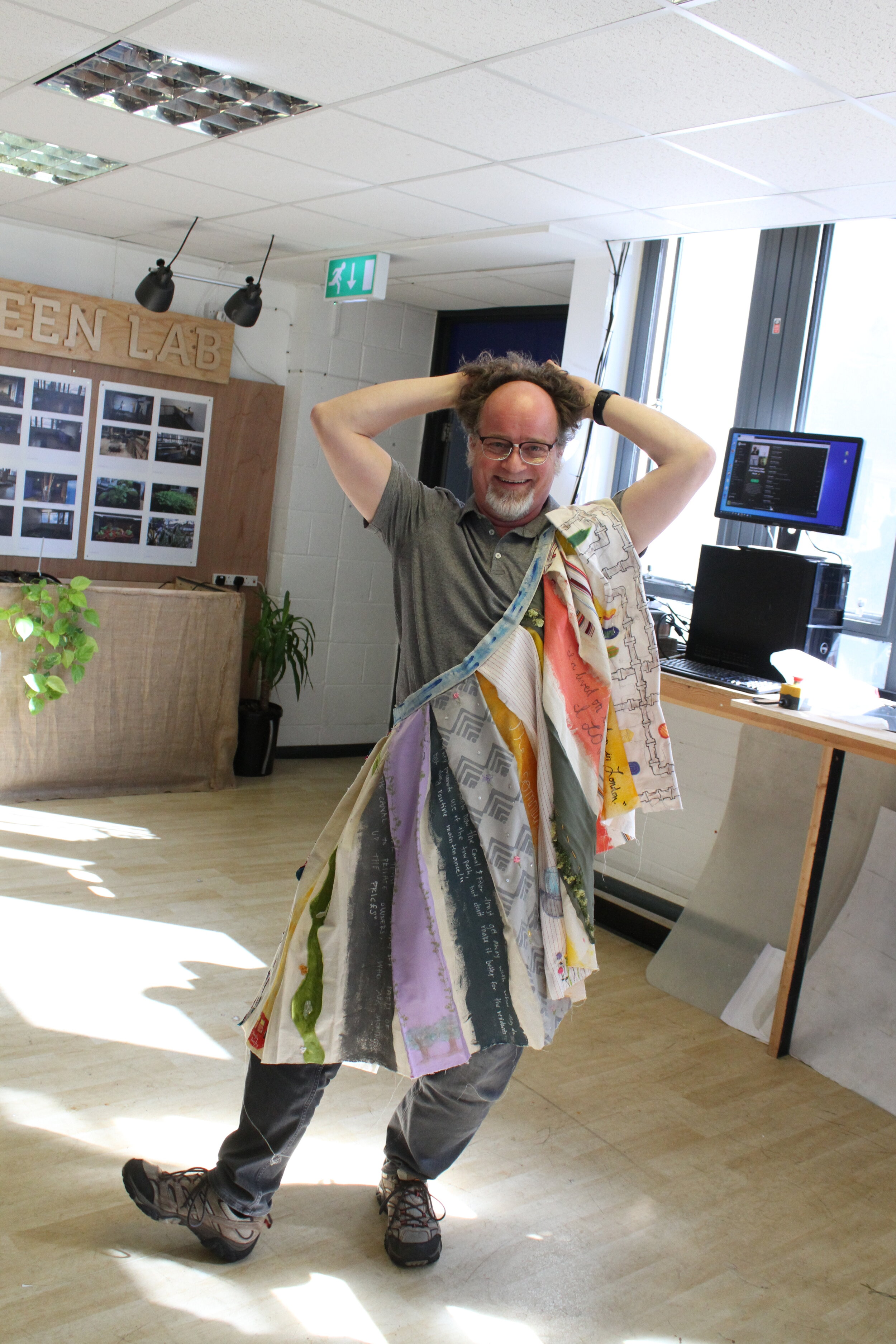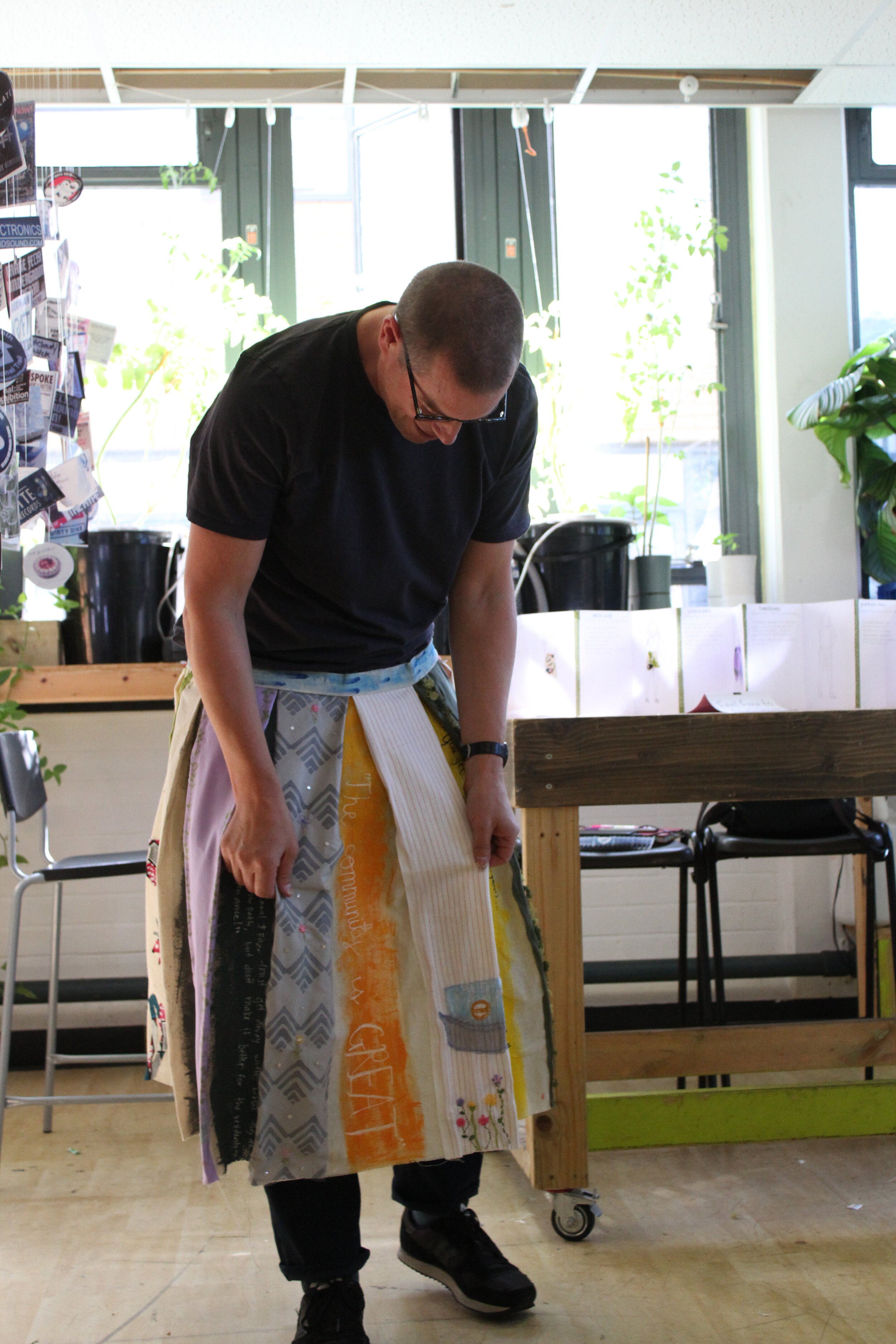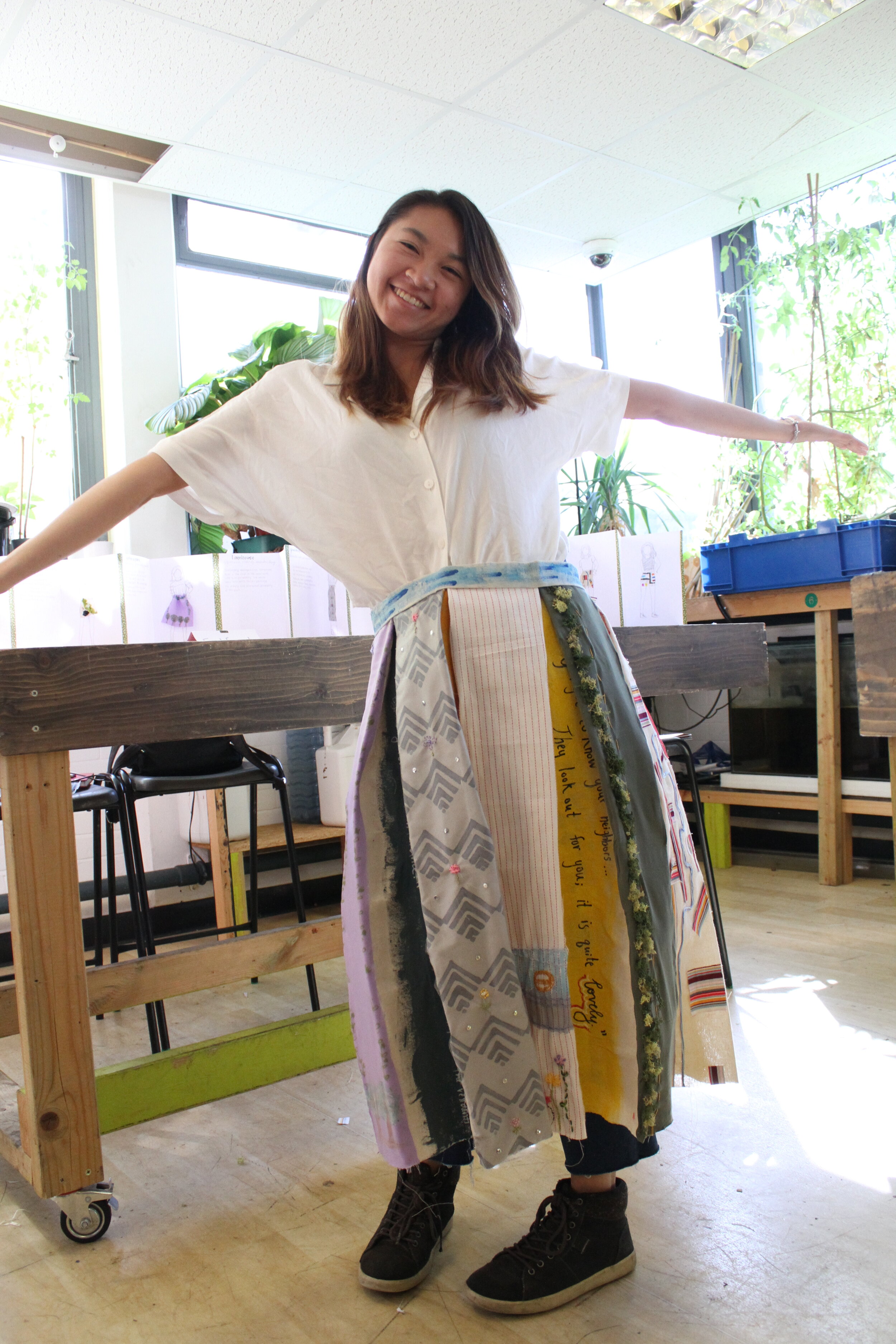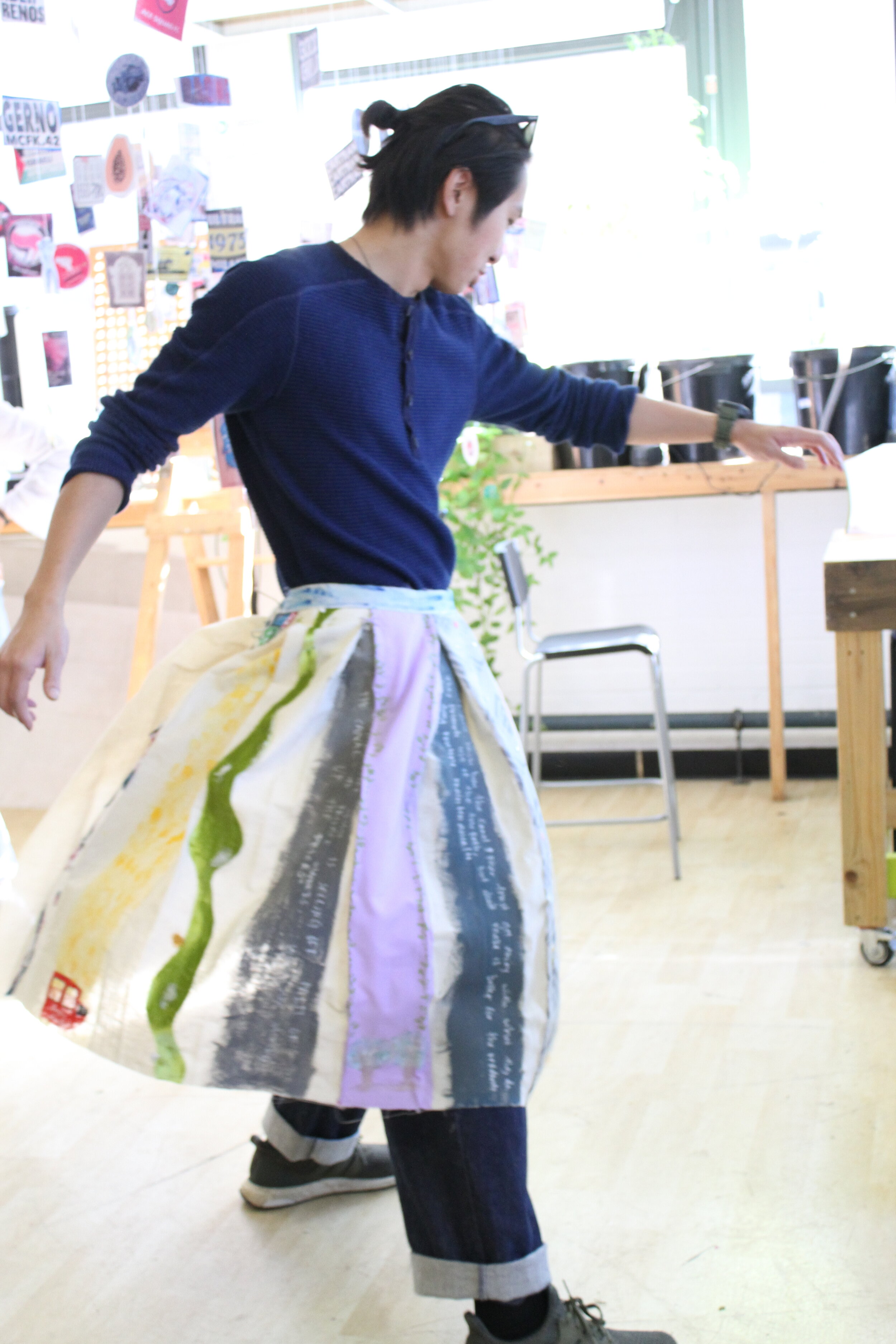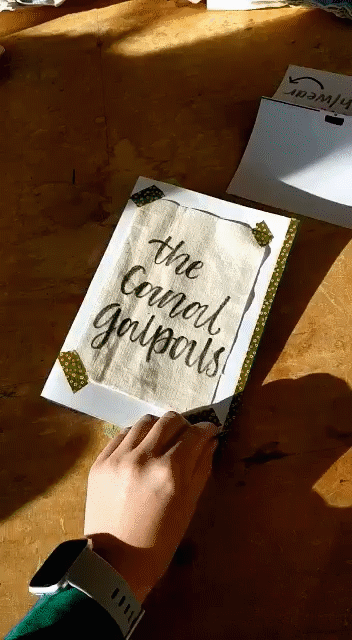Exploring System Design in London
The Ask: “How do systems create, enhance, and/or manipulate relations between people and place? How is this system particular to London?”
The System: My team chose to research and explore the network of canals in central London, which serve as sites of recreation, residence, and natural beauty in the city.
The Purpose: To learn to work through ambiguity, extracting meaning and data from and around systems of civic infrastructures.
The Final Deliverable: Using the data collected during our exploratory, speculative research on the canal, my team and I made a physical representation of the many personalities of London’s canal network in the forms of a pleated skirt and fashion ‘look book’.
01 The Beginning
In the Spring of 2019 I decided to do a study abroad program with two of my favorite HCDE professors. I was excited to apply because it combined so many things I loved: London, where I did a semester exchange for my Jewish Studies major; Brock Craft and Tyler Fox, two of the most engaging and intelligent professors I have encountered; and the study of urban systems and infrastructure, a field I am incredibly passionate about.
Before we left for London, we had planning workshops where we grouped ourselves into teams of three, and prototyped a recording device (something as simple as a pen and a sketchbook, or as complicated as a homemade pH tester) that recorded a system in London. For the purposes of this endeavor, a system was defined as anything that shapes human activity — and is shaped back in return. After data collection, we then organized, coded, and analyzed the data we collected and create a representation of that data in an iterative fashion.
It was truly a test of our ability to work through ambiguity.
02 System Selection
For our system, my team and I chose the Regent's Canal: an eight mile stretch of man-made canal built in 1820. We chose it in part because it had been my go-to running route when I had lived in London previously, and I had seen the abundance of activity that goes on along the canal towpath. No longer used for industry, in today’s London, the canal and the towpath alongside it provide commuting routes and recreation, and are equally shaped by the human activity that occurs by it and on it, including within the many houseboats that are docked along its length.
Map of the Regent’s Canal, which traverses central London
03 Exploratory Research
Observations
Going to London, our team was wary of the quantity and depth of data we would be able to capture along the canal. But once we started recording data we were amazed by how much there was to observe and record. We found that each spot on the canal had its own distinct personality, brought to life through different activities, colors of the surroundings, and feel.
We began with research conducted at eight sites along the canal path, focusing data-collection on sounds, activities, animals, art, and our emotional connection to each place. We recorded photos, sound, and videos, activities, people, trash, colors, houseboat decorations, and anything that seemed noteworthy. We also took time to sketch our feelings, thoughts, and emotions at each spot we visited.
Interviews
The richness of our data came from the contrast between our perceptions as outsiders versus the sense of community felt by residents of the canal, a few of whom we were able to interview — one of whom took us for a ride on her boat!
Through our interviews we learned about the Canal & River Trust (CRT) in London, and the canal residents’ tenuous relationship with the nonprofit. The residents felt the CRT did not spend the money from the extensive and constantly increasing fees to live on the canal into works projects that benefitted the residents; we saw this firsthand on the canal, where many of the locks used by tens of boats each day were broken in some way.
04 Data Analysis + First Prototype
Physical prototyping and making things with my hands — like crafts — is something I am skilled at, and it is one of my favorite things to do. Being able to make ‘crafts’ and go together for this project was such a fun experience!
Using craft supplies that our professors had bought, we began to build what was interesting to us about our data. This form of physical ‘sketching’ helped us to make sense of the abundance of data. I loved being able to put my impression of the canal into physical form, and found that cutting out little drawings I had made to represent key features of the locations helped me define the distinct characteristics of each place. Having each location’s data laid out on a map — distinct, but connected — helped me better understand the data we had collected.
Next, our team had to explore the meaning of the data we had collected at each location, specifically: What was different and what was the same between the sites?
Our first prototype as a team that organized our data geographically
05 Critique
We made multiple, varied iterations, with wholehearted dedication to the effort, and growing in our understanding and interpretation of our work
At this point we were two weeks into our three-week program. We had full-class critique sessions every other day. We went through multiple rounds of iteration and prototyping followed by standing up in front of 14 students and three professors to explain our ideas, what we liked, and where we were stuck. From these critique sessions I learned how to ask for the specific advice and feedback I wanted, and became much more skilled at offering critique to my peers that helped probe in a productive way.
My team presenting to our classmates and professors; here my teammate Kailey is showing the group one prototype we made
06 Iteration
Deciding to Portray Personalities through a Pleated Skirt
Through these critique sessions and going through the data with my team, my teammates and I realized that the most meaningful part of our data was the fact that each spot on the canal we visited had a unique personality. Despite the canal and towpath to physically connecting each of these locations to the others, they were all distinct with regard to our impressions of them and their ‘personalities.’
My teammates and I brainstormed and built multiple initial prototypes (puppet shows, braided ropes, children’s toys, etc.), but during one critique session my group and I were encouraged to pursue an idea I had sketched during a brainstorming session — the idea of a pleated skirt. Each pleat would represent one location along the canal and its unique personality; but the skirt would connect them all as one continuous piece, all connected on a single skirt just like water connects all parts of the canal. We also liked the skirt idea because fashion is a way many people express their personalities, and the flow of the fabric of the skirt would be represent the movement of water in the canal.
Making the Skirt
To begin, we went to secondhand shops and craft stores around London to see what was feasible to make with our £100 budget. We wanted to find fabrics and embellishments that reflected the personality of each location along the canal. To do this, we considered the color, pattern, and texture of each fabric; next, we found embroidery thread, beads, needles, markers, and fabric paint to help us convey the nuance of each location.
During one critique session, my team got the feedback that our prototype did not convey the depth and richness of our data. Through our research, we got to know a few canal residents — one couple gave us a tour of their beautiful boat and told us many stories of what life on the canals is like, and another lovely woman took us down the canal on her boat, regaling us with tales of canal life and her unfiltered opinion of the canal and river trust.
Considering the richness of our data as a result of the personal connections we made, we realized we needed to show the insider perspective we learned from the canal residents we befriended. To represent this nuance, we decided to decorate the inner pleats with quotes from the houseboat owners we interviewed.
As a result, when someone looks between the pleats on the outside that represent my team’s experience of the canal as outsiders, they see below our surface-level understanding and into the depths of the residents’ lived experiences.
Adding a Look Book
We decided to make a look book to go along with our skirt. This look book contained a mini iteration of each pleat, along with characterizing words for the location along the canal that pleat represented. That way, someone interacting with the skirt could refer to the look book to have a deeper understanding of each pleat, and which experiences and characteristics matched which place.
Our look book
07 The Final Skirt + Look Book
We made a tangible form because we wanted others to experience, touch, and see what we felt on the canal. After many prototypes, we decided a skirt portrayed our data best because personality is often shown through clothes and the movement of the skirt mimicked the movement of the canal water. To convey our fashion and design decisions but also provide context, we have paired our skirt with a look book that highlights each spot on the canal. We finished our project in a Project Runway-esque fashion, with last-minute edits and pinning. We loved our final product, but more than that I loved watching my classmates and professors interact and play with it, experiencing the same joy my teammates and I felt on the canal as they did so.
The Skirt
During final presentations my classmates and professors played with the skirt, experiencing it with joy and whimsy, similar to the way my team and I experienced the canal.
Our skirt has eight pleats, each representing a different site and decorated accordingly for that site’s personality. The inner pleats include positive and negative accounts of experiences of living on the canal and are decorated with quotes and feelings expressed by canal residents we interviewed during our research.
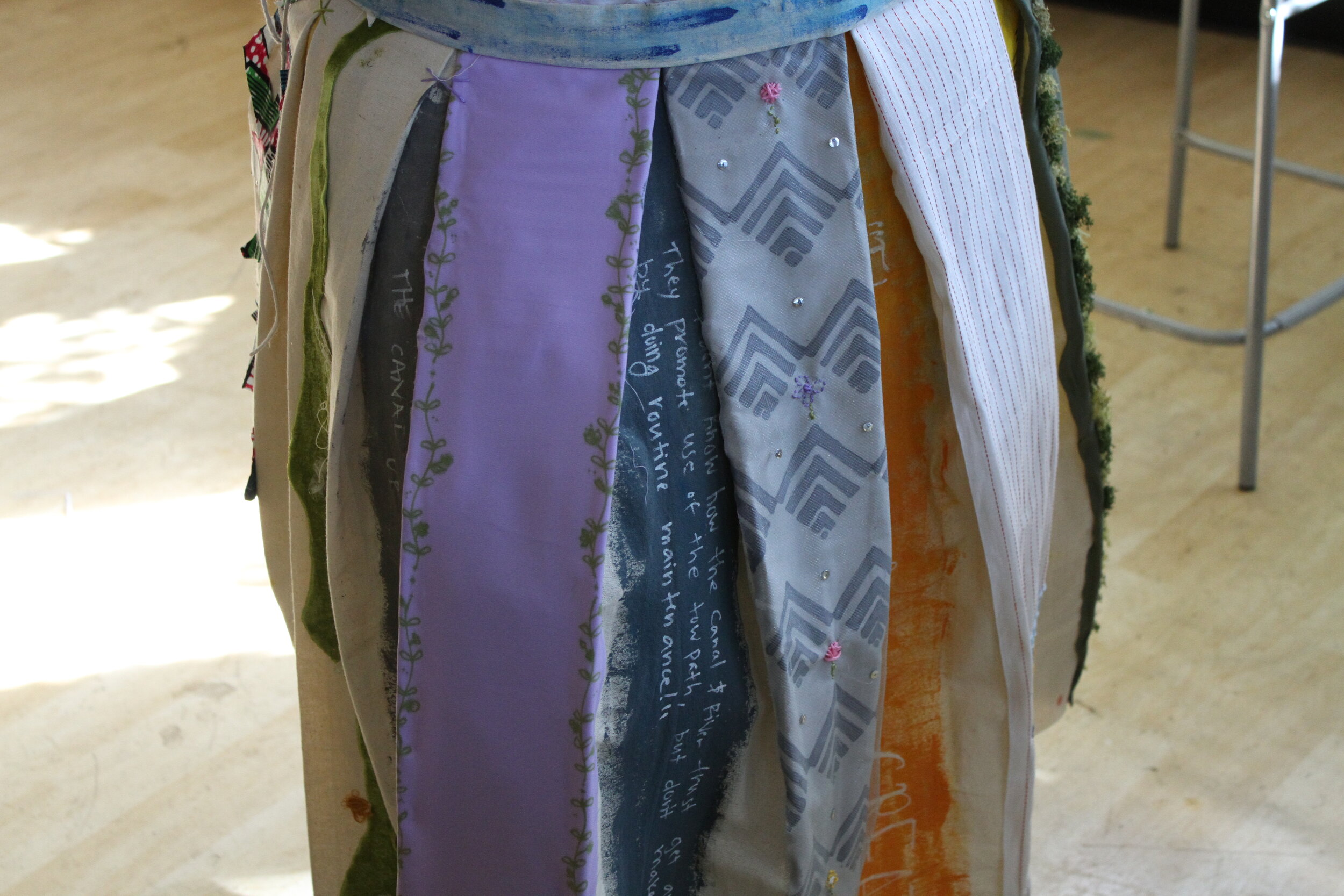
The Look Book
Here is our look book, a fashion booklet that has characterizing words for each place and a mini version of the design of that location’s pleat on the skirt. The look book gives context to the more abstract skirt; someone could look at the look book and then at each pleat to learn which experiences matched to what place.
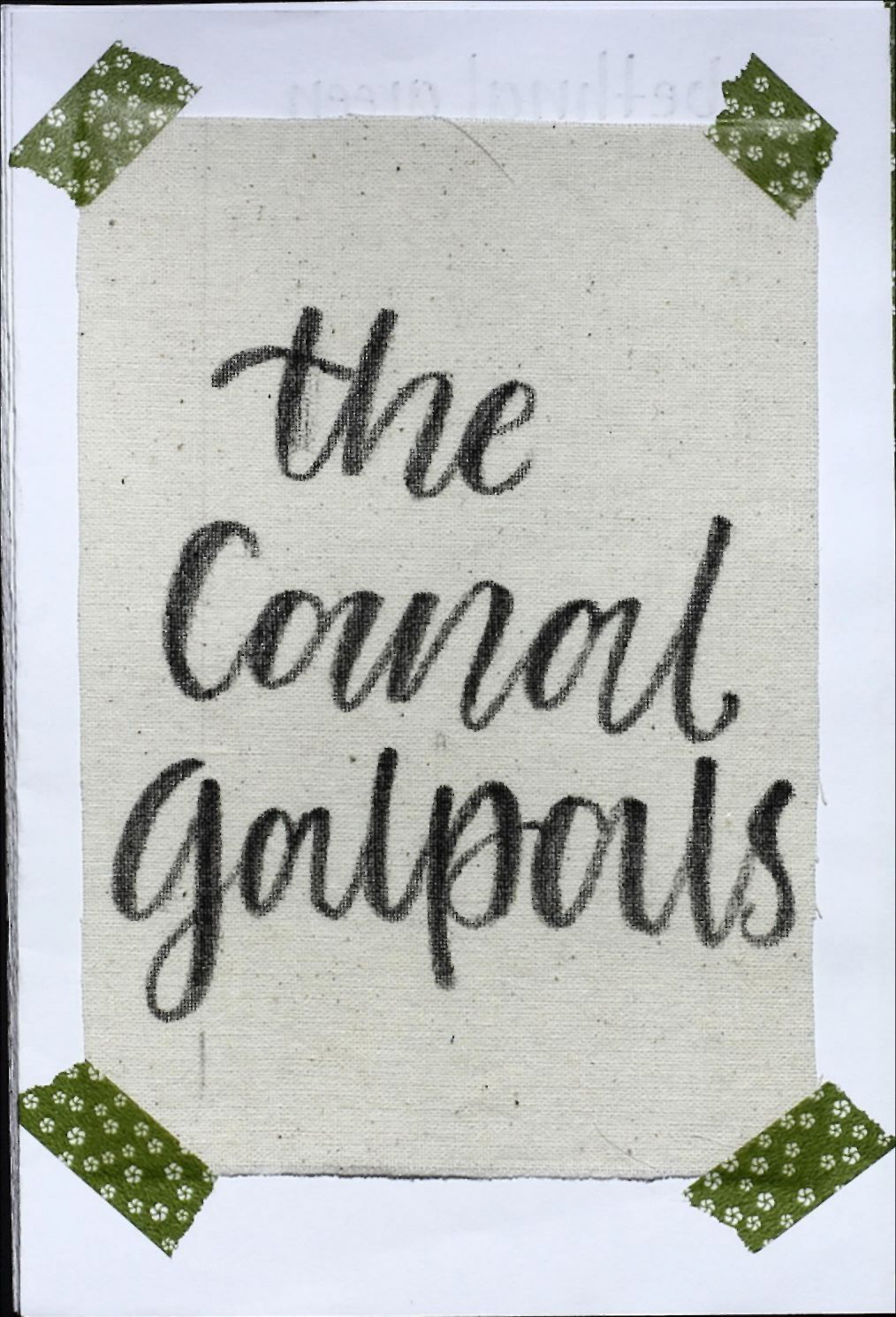
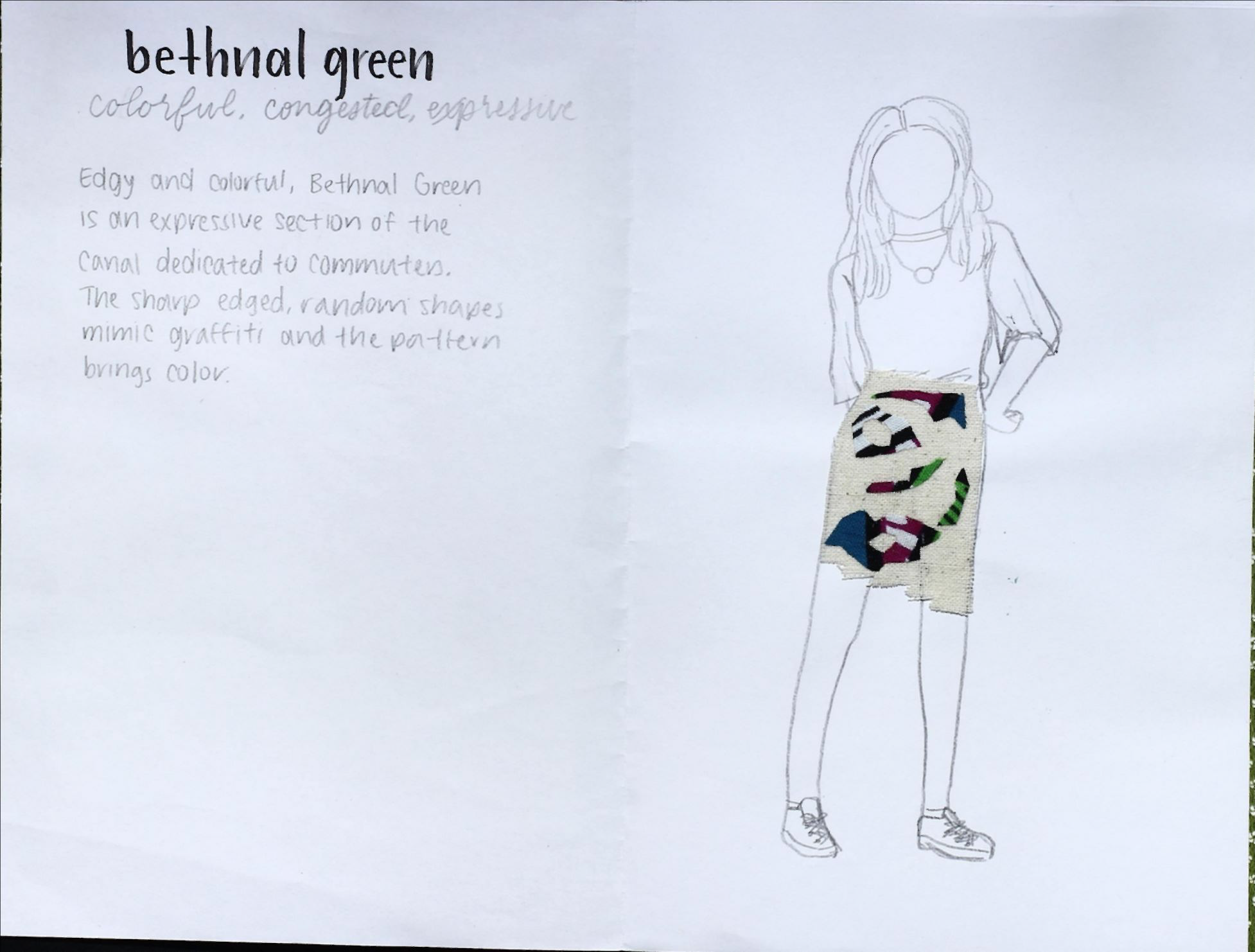
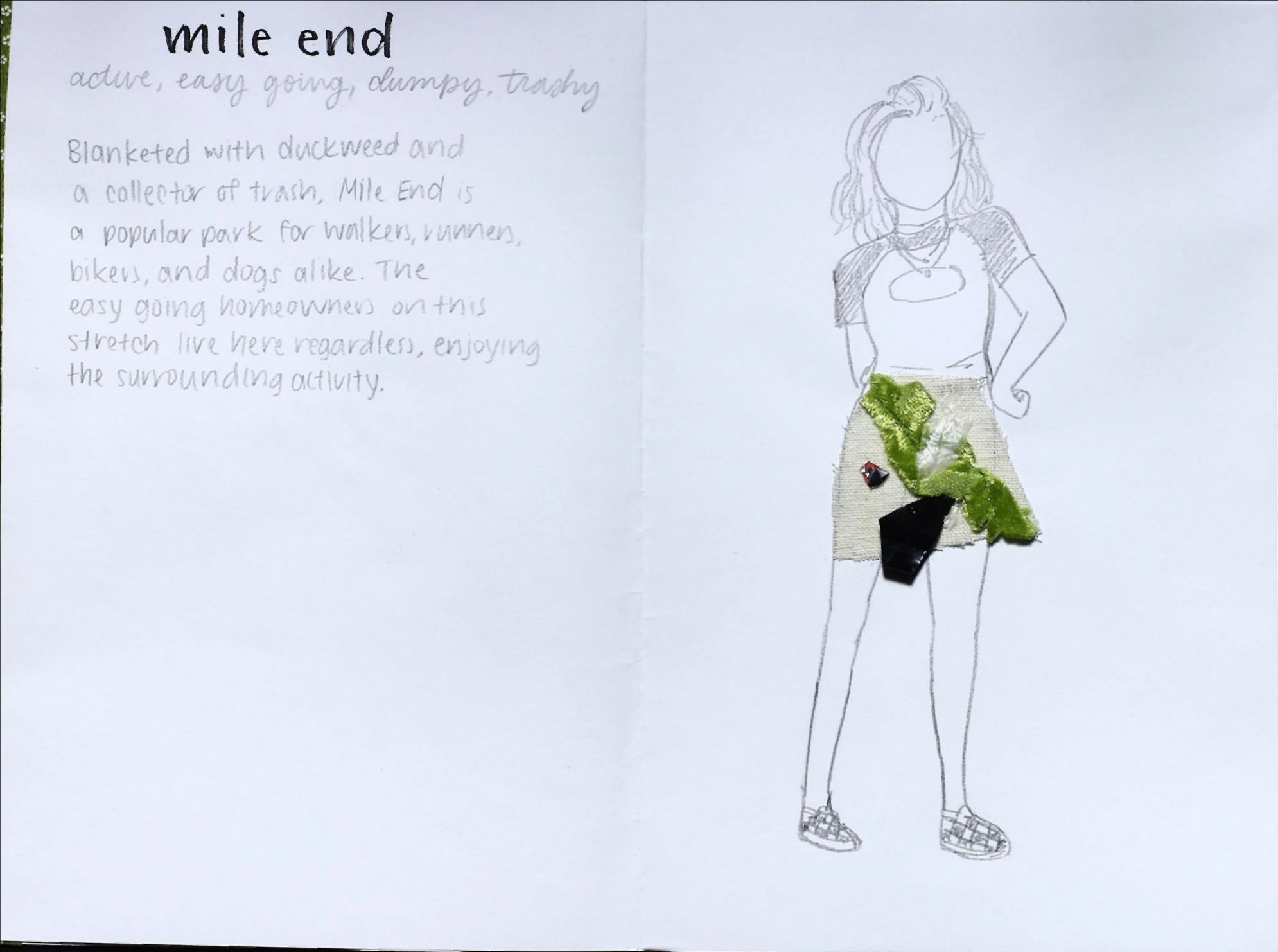
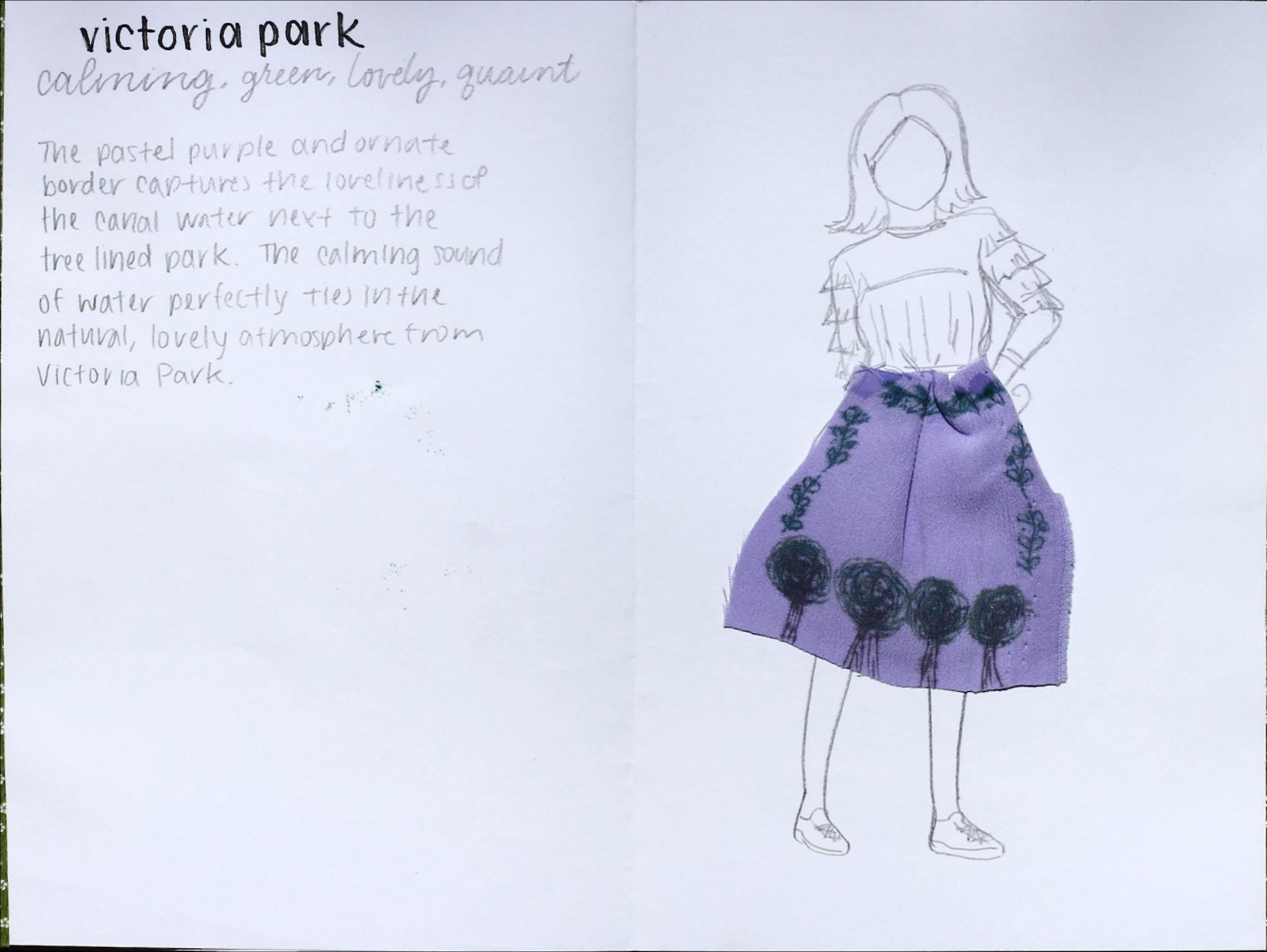
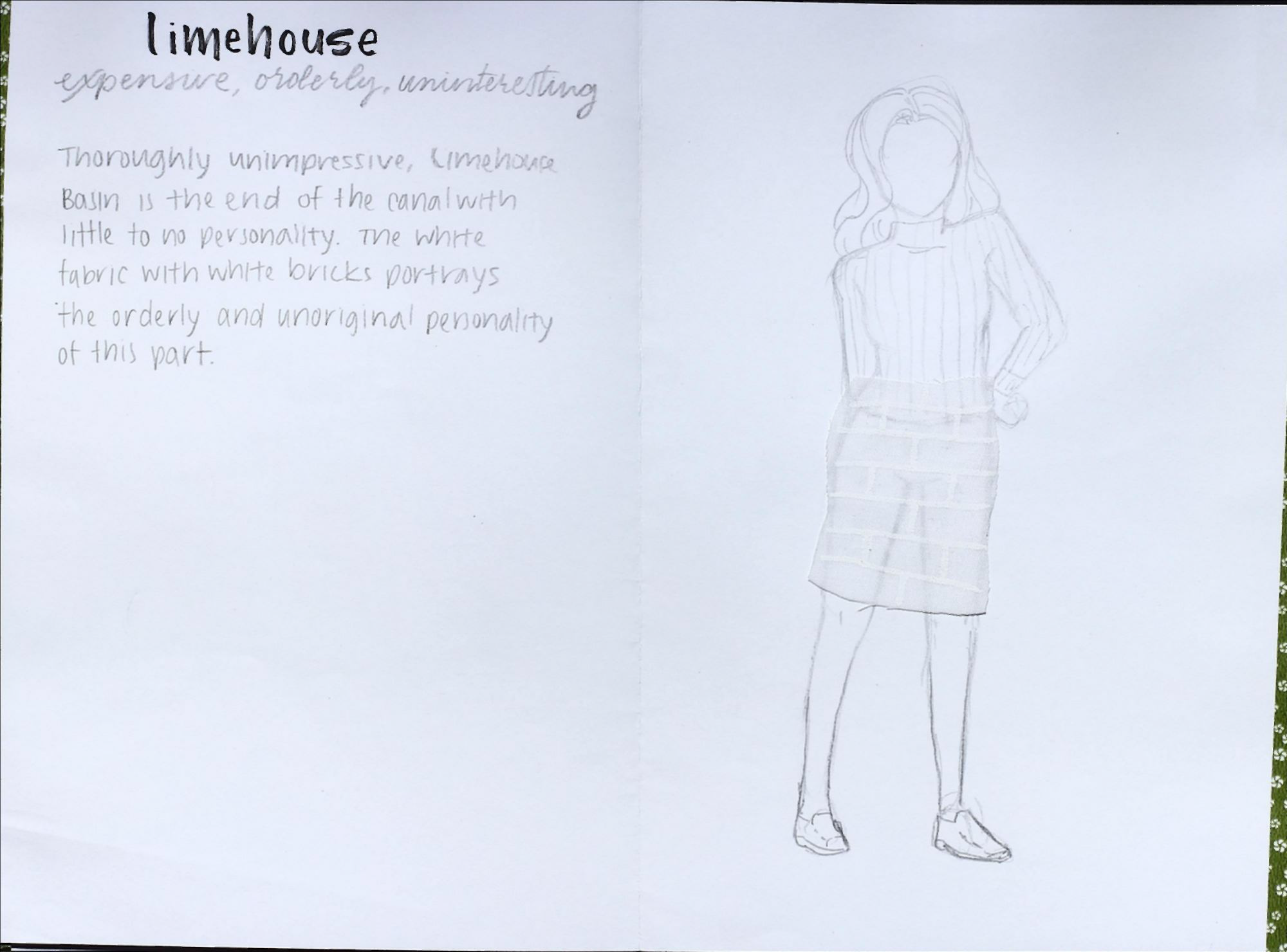
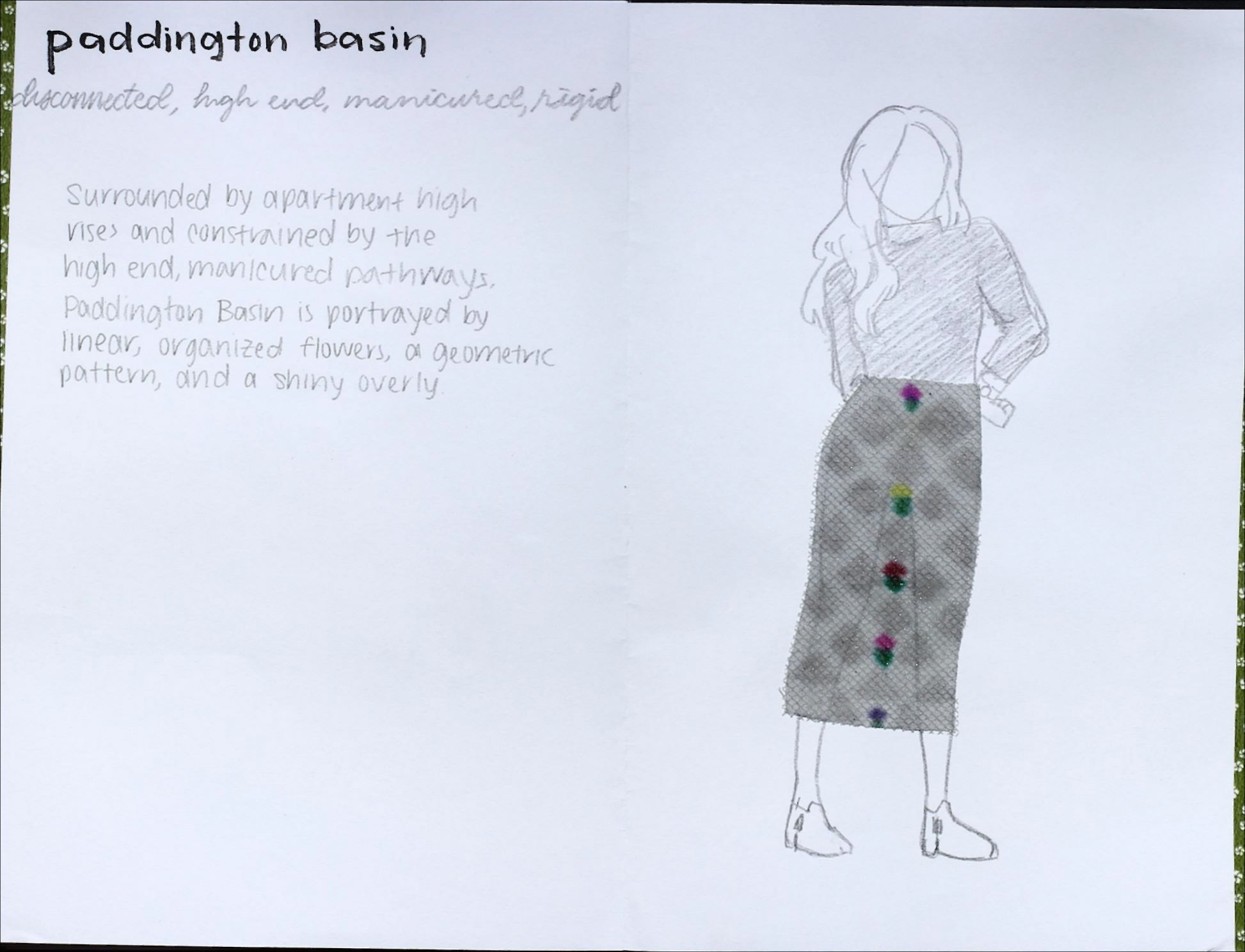
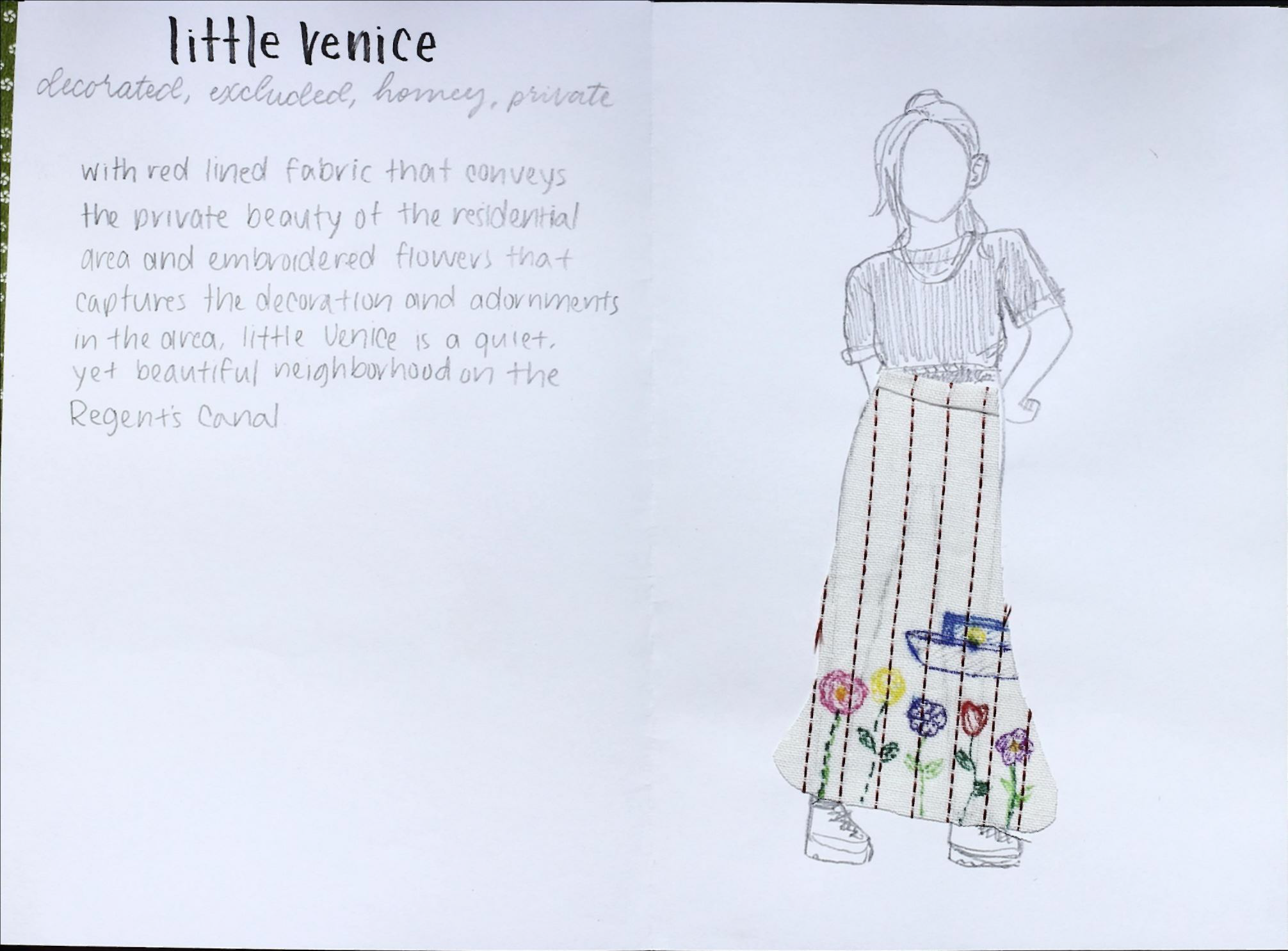

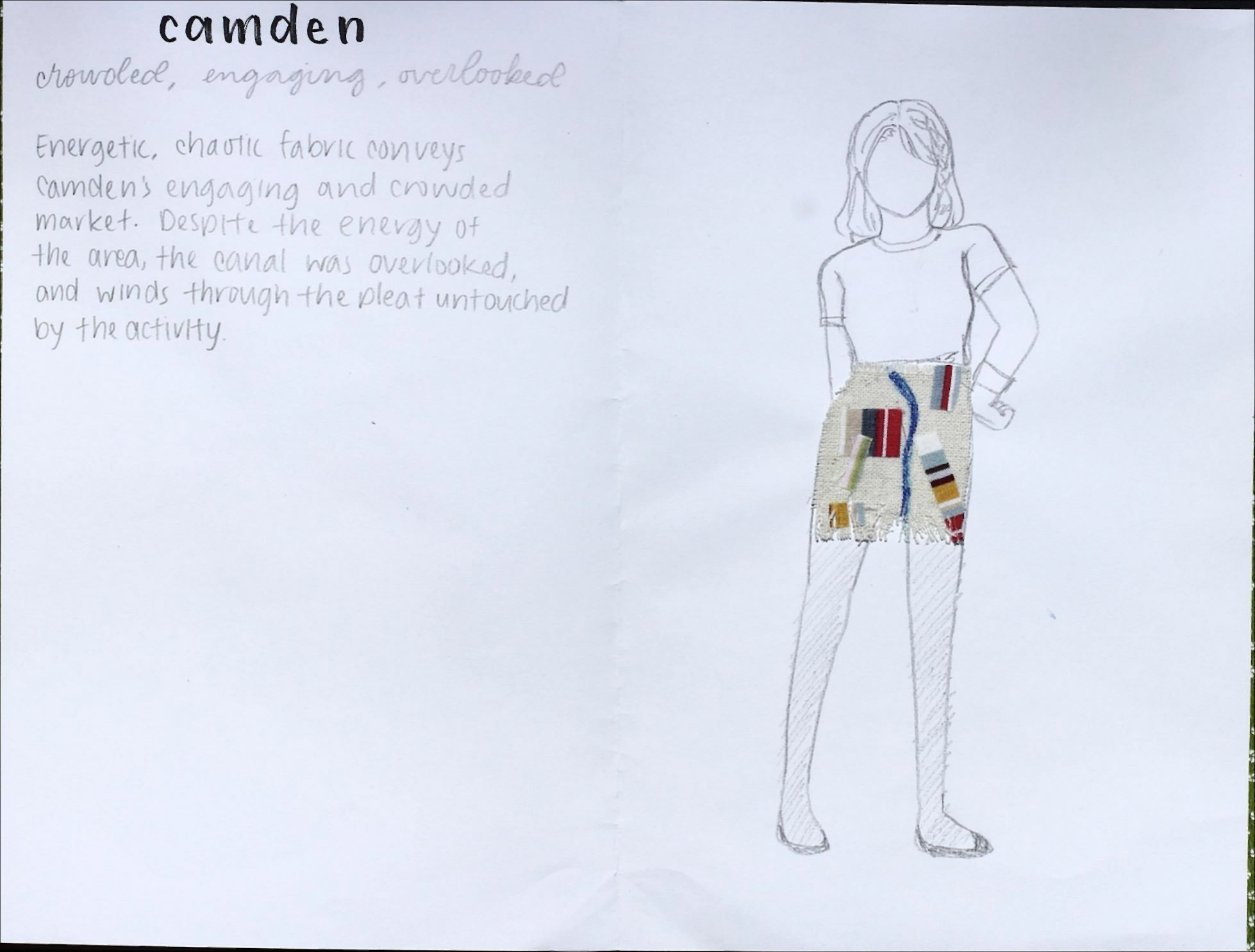
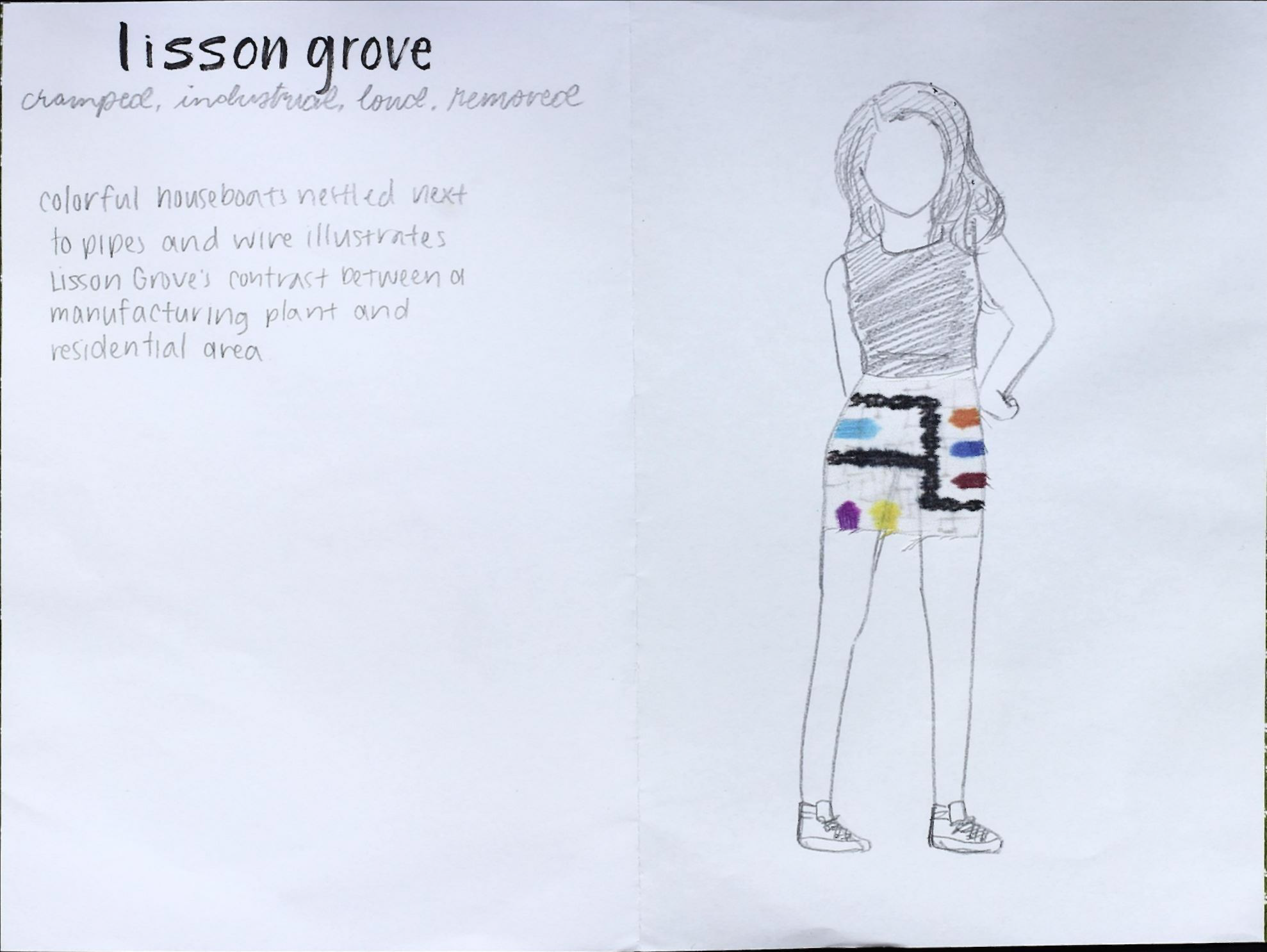
8. Reflections
On Exploratory Research
Our project explored a section of London infrastructure (and society) in a way that extracted rich data, and revealed something about a cultural subset that was not inherently perceivable to the average onlooker. I want to do more research and design like this; while I loved doing user research with traditional methods in my previous HCDE coursework, this project helped me to see that I can do meaningful research in many ways. I am stoked to continue doing projects like this one, even if it is only for my own enjoyment and benefit. Learning about the world and questioning my assumptions about it is critical not only to any research or design work I do, but also to making myself a better person, and to improving my contributions to the world around me.
On Collaboration
The collaboration skills I have gained through this trip will stay with me throughout my life; I feel like a much better team member after seeing how my and other teams worked. My team collaborated really well, with respect and kindness. Even when we disagreed or were frustrated, we worked to understand each other’s ideas. Our positive attitudes and open minds helped pull us out of our professor Tyler’s so-called “pit of despair.” Watching some of the other teams struggle was a great lesson in how a group can unravel under pressure; I learned that openness, respect, and softness towards each other are key in a team endeavor. That does not mean that individual opinions cannot exist, or that disagreements will not happen; rather, it is simply critical that team members do not close themselves off from the team when they do occur. Communication and collaboration are two of the most important skills for an employee to have in my opinion; this class pushed my classmates and I to become better at both of those skills, and because of that we are infinitely more prepared for the professional world.


